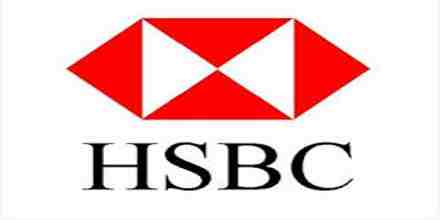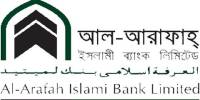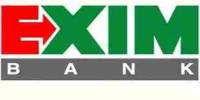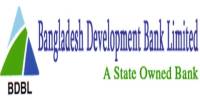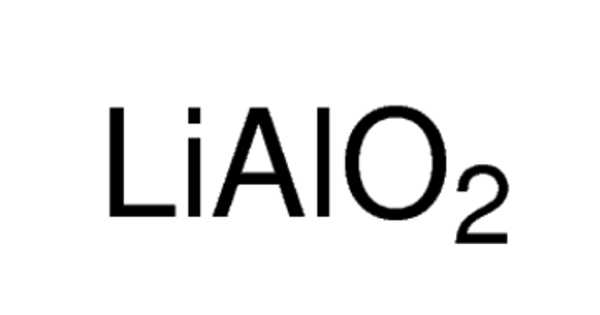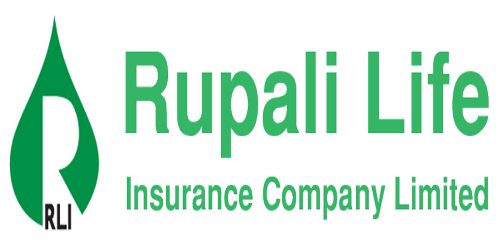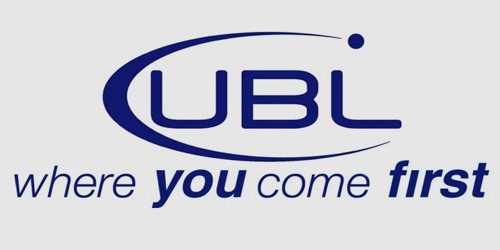The Brand Positioning of HSBC Bangladesh
The overall objective of this report is to gain a fair idea about the Branding and Brand Positioning of HSBC in Bangladesh in comparison with their competitors in Bangladesh.
More specific objectives of this report are provided in the following:
- A competitive analysis of HSBC with some other foreign banks
- To understand the brand and positioning of HSBC in the minds of Bangladeshi customers
- To understand how they link their marketing claim as “the world’s local bank” into a specific country perspective that is Bangladesh
- Why do consumers choose HSBC over other foreign and local banks
- An assessment of their overall operation and positioning in Bangladesh
Study Design
This report is designed as an exploratory research paper where the objective is to explore or search through a problem or situation and to provide insights and understandings on the situation. In this report, the positioning of HSBC as the world’s local bank and as a competitive bank in Bangladesh is explored using secondary data, qualitative searches, etc.
Scope of the Report
This study is conducted to know about the positioning of HSBC in Bangladesh and have a fair understanding of HSBC’s brand positioning only in Bangladesh. For keeping the report simple, the report only goes in-depth to explain the current market scenario compared to other foreign competitors.
Methodology
The methodology used for the preparation of this report consists of 4 step process:
Planning: The first step of this report preparation was to create a plan that was to be executed in the coming 12 weeks internship period. For the planning process, discussion with the academic supervisor was undertaken in order to come up with a topic or problem that can be explored for the completion of this paper. After the discussion, the brand positioning of HSBC was to be explored as a topic for this internship report.
Field Experience: The next step was the actual internship and work experiences at HSBC during which the topic of brand positioning of HSBC was explored. The work experience and job responsibilities are given in details in chapter 4 of this report.
Data Collection: Two types of data has been collected for this report:
As this is an exploratory report, majority of the data that were collected were in secondary form. However, as primary data source, I have conducted interviews and group discussions with the management of my branch as to understand the brand in an HSBC point of view. I have also had some discussion with customers to find out about a consumer point of view regarding HSBC’s brand and positioning. Finally discussions with competitor banks’ employees were source of some more vital information regarding the competition study.
As secondary data, internet and text books were used for references. In addition, information from competitor banks, journals, publications, annual reports, etc was used as a mean of reference and secondary data for this report. Brochures and ads from HSBC was also analyzed for the purpose of understanding the basic marketing tools used by HSBC to win over their competitors in positioning themselves in the mind of the consumers.
Analysis: The data collected from all the sources has been critically analyzed in order to get a proper understanding of the problem and provide the readers with as much detail as possible about the topic and its analysis. The data has also been analyzed to avoid duplication and the reliability and validity of the sources has also been taken into consideration when collecting the data.
About HSBC
As the world’s local bank, HSBC’s international network comprises around 8000 offices, in 88 countries and territories in Europe, the Asia-Pacific region, the Americas, the Middle East and Africa. With listing on the London, Hong Kong, New York, Paris and Bermuda stock exchanges, shares in HSBC Holdings plc are held by around 220,000 shareholders in 119 countries and territories. The shares are traded on the New York Stock Exchange in the form of American Depositary Receipts. HSBC in headquartered in London and is one of the largest banking and financial services organizations in the world.
HSBC has a wide range of financial products to offer encompassing personal, commercial, corporate investment and private banking; trade services; cash management; treasury and capital market services; insurance; consumer and business finance; pension and investment fund management; trustee services; and securities and custody services.
Group History
The Hong Kong and Shanghai Banking Corporation Limited was established in 1865 in Hong King and Shanghai to finance the growing trade between China and Europe. Thomas Sutherland, a Hong Kong Superintendent of the Peninsular and Oriental Steam Navigation Company helped to establish this bank in March 1865. Throughout the late nineteenth and the early twentieth centuries, the bank established a network of agencies and branches based mainly in China and South East Asia but also with representation in the Indian sub-continent, Japan, Europe and North America.
The post-war political and economic changes in the world forced the bank to analyze its strategy for continued growth in the 1950s. The bank diversified both its business and its geographical spread through acquisitions and alliances.
HSBC Holdings plc, the parent company of the HSBC Group, was established in 1991 with its share quoted on both the London and Hong Kong stock exchanges. The HSBC Group now comprises a unique range of banks and financial service providers around the globe.
HSBC Brand & Corporate Identity
The Hexagon logo of HSBC derives from HSBC’s traditional flag, a white rectangle divided diagonally. Like many other Hong Kong company flags in the last century, the design of the flag was based on the cross of ST. Andrew, The Patron Saint of Scotland.
HSBC brand & corporate identity represents what HSBC wants its brand to mean to its customer. It is derived from the groups:
Corporate Character
HSBC is a prudent, cost conscious, ethically grounded, conservative, trustworthy international builder of long-term customer relationships.
Basic Drives
Higher productivity, Team Orientation, Creative Organization & Customer Orientation.
Vision
To be the world’s leading financial company. The essence of HSBC brand is integrity, trust and excellent customer service. It gives confidence to customers, value to investors & comfort to colleagues.
The History of HSBC Bangladesh
The HSBC Asia Pacific group represents HSBC in Bangladesh. HSBC opened its first branch in Dhaka in 17th December, 1996 to provide personal banking services, trade and corporate services, and custody services. The Bank was awarded ISO9002 accreditation for its personal and business banking services, which cover trade services, securities and safe custody, corporate banking, Hexagon and all personal banking. This ISO9002 designation is the first of its kind for a bank in Bangladesh. The Hong Kong and Shanghai Banking Corporation Bangladesh Ltd. primarily limited its operations to help garments industry and to commercial banking. Latter, it is extended to pharmaceuticals, jute and consumer products.
Other services include cash management, treasury, securities, and custodial service.
Realizing the huge potential and growth in personal banking industry in Bangladesh, HSBC extended its operation to the personal banking sector in Bangladesh and within a very short span of time it was able to build up a huge client base. Extending its operation further, HSBC opened a branch at Chittagong, three branch offices at Dhaka (Gulshan, Mothijheel and Dhanmondi) and an offshore banking unit on November 1998. HSBC also has its presence in the 5 EPZ’s of the country. These offices have been set up in order to strengthen the business relationship with the corporate customers. Identifying vast business opportunity a corporate branch was opened in Narayanganj in April 2010. Today HSBC has a network of 13 offices, 39 ATMs, 9 Customer Service Centers, an offshore banking unit, and offices in 7 EPZs with 1051 employees as of December 2010.
Corporate Sustainability
HSBC aims to run a sustainable business for the long term. This is about achieving sustainable profits for their shareholders, building long-lasting relationships with customers, valuing their highly committed employees, respecting environmental limits and investing in communities.
The current financial crisis has highlighted how important it is to look ahead to the challenges of the future. HSBC believes that by doing this, they can provide shared value for their shareholders and the wider economy, the environment and society.
As a bank, they manage risk and identify business opportunities every day. They seek to embed social and environmental issues into what they do. Climate change and globalization are critical trends shaping the way HSBC does business in the future. These trends will affect the world’s poorest people most significantly. HSBC aim to mitigate the risks and maximize the opportunities associated with these shifts.
Management of HSBC Bangladesh
HSBC Bangladesh in under the strict of supervision of HSBC Asia Pacific Group, Hong Kong. The Chief Executive Officer of HSBC Bangladesh manages the whole banking operation of HSBC in Bangladesh. Under the CEO there are heads of departments who manage specific banking functions e.g. Personal banking, corporate banking, etc.
Management Hierarchy:
HSBC follows a 5-layer management philosophy in Bangladesh. These are Senior managers, Managers, Assistant Manager, Officer and Associate. The CEO is the top most authority of all the levels. Senior managers are the departmental heads who are responsible for the activities of their departments. They are the heads of the department and formulate strategies for that department e.g. Head of Personal Financial Services. Managers have the authority next to managers.
HSBC Brand Positioning –
Brand & Brand Positioning
Positioning is the act of designing the company’s offering and image to occupy a distinctive place in the minds of the target market. The goal is to locate the brand in the minds of the consumers to maximize the potential benefits to the firm. A good brand positioning helps guide marketing strategy by clarifying the brand’s essence, what goals it helps the consumers achieve, and how it does it in a unique way. It is essential that everyone in the organization understand the brand positioning and use it as context for making decisions.
HSBC has been positioning itself as the “world’s local bank” for a while now. They are a bank that takes pride in understanding the subtleties of cultural differences. In 2009, they introduced a thought-provoking ad campaign illustrating how there are multiple perspectives on any given subject. HSBC tagged the campaign with a special URL, yourpointofview.com
This website served as a gateway to the current campaign’s creative material where customers were invited to learn about HSBC’s brand values which are as follows:
- Perceptive — We will anticipate and meet the needs of our diverse customers around the world by using our ability to combine our global reach across markets and segments with local knowledge and expertise.
- Progressive — We are committed to continuous improvement in quality, effectiveness and efficiency through team work.
- Responsive — We will act quickly to ensure we meet and exceed our customers’ ever changing expectations. Management at all levels will be hands-on, operating with a minimum of bureaucracy, giving guidance with wisdom and delegating with confidence.
- Respectful — We will exercise corporate responsibility in our activities and we are committed to the welfare and development of our local communities. We are committed to complying with the letter and the spirit of all relevant laws and regulations in the various countries in which we are present. We will operate the Group prudently; exercising strict expense and credit discipline, and maintain strong capital and liquidity ratios to ensure no diminution in our external ratings. We value long term, ethical client relationships.
- Fair — We will demonstrate the highest levels of integrity and put the Group’s interests ahead of the individual’s. We will treat customers, employees and suppliers fairly and objectively.
HSBC’s advertising certainly reflects one brand value, and very much so — the first one, “Perceptive.” All the bank’s current advertising materials illustrate how the bank celebrates diverse cultures and customs of people around the world, and that “every individual has their own priorities and values, and that these form the basis of many important decisions,” as the bank puts it.
“A different point of view is simply the view from a place where you’re not.” – HSBC
“Through our campaign, HSBC challenges people to address their own values and discover what drives and motivates them in their daily lives,” the bank says on its website. “And through this journey it is our belief that what we learn from one customer will help us to better serve another.”
However, assuming HSBC is successful at positioning itself as “a bank that understands different perspectives and local cultures,” how much does this resonate with the bank’s target audience? And if we don’t need international banking expertise, what does HSBC’s positioning mean to us? Moreover, if we look at HSBC at according to Bangladesh’s point of view, the ultimate question still remains – a bank that considers itself the world’s local bank, when it comes to positioning itself in the local market in terms of its competitors, is it really Bangladesh’s local bank? In this chapter the readers will get an insight on the internal and external strengths and weakness of HSBC and its competitor analysis, to find out where it stands as a brand in Bangladesh.
The 5 Factors of Brand Positioning
Understanding these following factors are essential to understand the current position of a Brand and how it differentiates itself from its competitors to create a permanent position in the minds of the consumers.
Brand Attributes
This is basically what the brand delivers through features and benefits to consumers. For HSBC Bangladesh, the services they provide in Bangladesh (described in Chapter 3) are their brand attributes that make them different from their competitors. If we consider it in materialistic point of view, then the size, shape, color, etc are part of the attributes. However as HSBC is a part of the service industry, in this case, the superior services they provide and the different number of services they provide in Bangladesh act as the attributes for HSBC.
Consumer Expectations
As the name says it, it is what consumers expect to receive from the brand. Being a customer at HSBC, my expectation would be to find HSBC anywhere I travel around the world. At this level, HSBC is definitely successful in meeting consumer’s expectations, however when it comes to locally seeking HSBC, they are yet to meet full customer satisfaction as when compared to other local and foreign banks, their concentration is not yet eminent in Bangladesh.
Competitor attributes
When we consider brand positioning, we have to analyze who are our competitors and what are they providing in terms of attributes to their consumers. Thus, competitor attributes are basically what the other brands in the market offer through features and benefits to consumers. In the later part of this chapter, this part is described in details.
Price
Pricing strategies are very important when it comes to distinction among brands and decision making process. However, as banks are financial institutions providing services, for HSBC the pricing strategy is mainly based on the amount of interest they are charging for providing loans to their customers. When it comes to immediate competitors of HSBC in Bangladesh (Standard Chartered Bank and Citi Bank North America) the loan interest percentage variation among these banks is not that high, however, when we compare it with the local banks, there is a vast amount of variation mainly because the ultimate survival plan for the local banks is through their loans.
Consumer perceptions
This is the perceived quality and value of the brand in consumer’s minds (i.e., does the brand offer the cheap solution, the good value for the money solution, the high-end, high-price tag solution, etc.?). If we consider HSBC’s perception in the consumer’s mind, then the first thing consumer’s would consider is the brand that HSBC has created internationally. HSBC was rated as the number one bank in the world of 2010. As a result, every consumer wants to be part of the best in the world and thus consumers choose HSBC because they feel they have an account with the best bank in the world, even though this may mean having an opportunity cost of getting better services from other local banks.
SWOT Analysis
The diagram below analyses HSBC Bangladesh’s internal strengths and weaknesses and external opportunities and threats. This has been prepared based on their performance since their existence in Bangladesh and some local and foreign banks are taken into consideration as immediate competitors.
Strengths:
- Strong brand image
- Strong corporate culture
- Young enthusiastic workforce
- Reputation for having no hidden charges
- Modern equipment & technology
- High visibility as a brand
- Global reach
Opportunities:
- Cover different areas of Bangladesh
- Increase ATM concentration
- Growing upper class customers
- Growing economy
- Lack of international expertise of local banks
- Weaker marketing approach by other local and foreign banks
Weaknesses:
- Very few ATM Booths all over Bangladesh
- No Credit Card Facility
- Narrow operating span
- Centralized decision making
- Conservative lending policies
- Low remuneration package
- High response time for getting group approval
Threats:
- High concentration of ATM booths of local competitors (DBBL, BRAC)
- Quality of service provided by immediate competitor (SCB Priority Banking)
- High tech software’s used by competitors for faster customer service
- Similar services offered by other banks
Industry Analysis (Porters Five Forces)
It is extremely crucial to analyze competitive forces in the industry environment to identify opportunities and threats. Michael E. Porter’s well-known framework, known as the five forces model helps with this sort of analysis. The model focuses on five forces that shape competition within an industry. The stronger the five forces, the more limited is the ability of established companies to raise prices and earn greater profits. Therefore, we can conclude that a strong competitive force can be considered as a threat because it depresses profit, whereas, a weak competitive force can be viewed as an opportunity as it facilitates the companies to earn higher profits. The situation of the industry changes over time. The influence of the five forces in the banking industry has been discussed below:
Threat of Potential Entrants:
Potential competitors are companies that are not currently competing in an industry but have the capability to get into the industry. The banking sector of Bangladesh seriously faces the threat of new entrants. However the threat comes from two directions. The first threat comes with the arrival of the multinational banks and their branch expansion particularly due to the booming energy sector. Secondly, the continuous entries of local banks with lower cost structure also possess a severe threat to this industry.
In the context of HSBC the various new and upcoming banks are posing a significant threat. But HSBC is aware of these potential competitors. So it is trying to expand countrywide to make the sector unattractive and to create entry barrier. Recently two branches have been opened in Narayanganj and Mirpur to counter these threats.
Government policies for banking industry are not so strong in this country. We do not have strong rules and regulation from Bangladesh Bank for regulating the private banking sectors.
If government does not regulate the banking sector strongly, then lots of new banks will come and will make the competition more intense.
Rivalry among Established Companies:
In the banking sector, the market size is measured in terms of total deposits and total advances. Banking industry in Bangladesh is highly fragmented with categories like:
Nationalized Commercial Banks (NCB) and Foreign Commercial Banks (FCB). The banking sector is at the growth phase as different types of businesses are mushrooming all over the places in Bangladesh, the need for banks has emerged, resulting in lots of banks operating in the market making the present situation quite intense. There are more than 50 commercial banks in the market, which are constantly fighting for the share in the market. Among the international banks, Standard Chartered Banks has the largest network in the metropolitans of Bangladesh, operating quite aggressively which can be a severe threat for the other banks.
Among the national banks, those who pose rivalry and challenge are Dutch Bangla Bank Limited, Brac Bank Limited to name a few.
Threat of Substitutes:
There are substitute financial institutions that do many of the activities and transactions of a bank in the leasing field but these institutions are too small in size. These institutions can shrink the profit margin of commercial banks. Industrial Leasing and Development Company Ltd. (IDLC), Industrial Promotion and Development Corporation (IPDC), United Leasing Company are the key players.
They provide industrial leasing to many companies in the country. Vanik Bangladesh Ltd, a merchant bank, provides investment counseling and credit services among its other financial activities. But some of the operations of the banks like exporting/importing have no substitutes. In banking industry substitute products are very easy to find. We need to consider all types of substitute products for the banks. Different private and nationalized banks are offering similar products, which are close substitutes. On the other hand, some non-bank like insurance companies and leasing companies are also competing indirectly with the commercial banks products.
All the products of the commercial banks perform the similar functions. Taking the money from the depositors and sanctioning loan to investors are the main functions. They all do it in a same manner. HSBC is not different from them. Since functional similarity is high in banking industry, so competition is also high because customer can switch at any time they want.
Bargaining Power of Buyers:
Bargaining power of the buyer can be viewed as a competitive threat when they are in a position to demand lower prices from the company or when they are in a position to demand better service that can increase operating costs. On the other hand, when buyers are weak, a company can raise its prices and earn greater profits. For the banking industry, buyer means customers who take loan from the banks.
Switching cost is very low in banking industry. Every bank is giving the similar types of loan service at similar interest rate. So, an individual who wants to take loan from banks can switch easily to other banks if he or she does not like the terms and conditions. Customers of HSBC are switching to other banks because of low interest rate and lots of other reasons. Lower switching cost makes the industry more competitive.
In banking industry, there is always a threat of backward integration. Big multinational companies can give threats to the commercial banks that they will arrange their funds by forming another bank where the cost of fund is lower compared to other banks. For this reason, giant customers of this industry always possess more power than their banks.
Creditors are considered to be the buyers of the banks. There are thousands of creditors from all walks of life. Mainly businessmen are the major buyer of bank’s credit. Big amount creditors have strong power in determining interest rate of their credit amounts. Banks distinguish their prime customers from others by setting a prime interest rate for them.
Bargaining Power of Suppliers:
Bargaining power of suppliers can be viewed as a threat when they are able to force up the price that a company must pay for its inputs or reduce the quality of the inputs they supply, thereby depressing the company’s profitability. On the other hand, if suppliers are weak, this gives the company the opportunity to force down prices and demand higher input quality. For the bank, the main supplier of fund is depositor. Bank also gets the fund from the directors.
HSBC has one of the largest capitals among all the private banks. The bank does not want more money right at this moment because there is a very few good opportunities for investment. So it is offering lower interest rates on depositors for their funds. Bargaining power of the fund supplier is low in banking industry because there are lots of individual savings in the economy but banks do not have opportunities for investment.
Sometimes suppliers of funds can give threat to the banks as well. Corporate or big multinationals companies can give threat to the private bank that they will form another bank for depositing their money. They will not supply any fund to other banks. This can lead to a higher competition in procurement of fund.
An Analysis of PLC of HSBC Bangladesh
To find out where a product is stationed, we use Product Life Cycle (PLC). Similarly, we use Organization Life Cycle to find out what is the current position of the organization. There are five phases in this cycle:
- Introduction
- Growth
- Maturity
- Decline
- Death
Some of the characteristics of the growth stage are:
- Sales volumes increases significantly
- Profitability begins to rise
- Public awareness increases
- Product quality is maintained and additional features and support services are added
- More and more employees are hired
Both from the documents and my 3 months experience, I can say that all of the attributes are applicable to HSBC. Today HSBC is at the position, where it can claim itself as the most successful multinational banks in Bangladesh. Its sales and profitability is increasing every year. Earlier, HSBC was a media shy bank. But now it is coming out of that image and is making bold movements. New products and services are being added to portfolio. Many new employees are being hired to meet the increased demand. So it can be easily said that HSBC is not at its ‘Growth; stage and it is going to enjoy this position for the upcoming few years.
HSBC Brand Position Analysis
Throughout the previous chapter, I have tried to analyze HSBC’s current market position. However when it comes to HSBC’s brand position in Bangladesh, it is very important to compare it with its biggest competitor in Bangladesh, Standard Chartered Bank (SCB). Thus, the following contains some competitive analysis that shows HSBC’s overall brand position in Bangladesh and later the vital question is answered by few of HSBC’s customer as to why and why not choose HSBC for banking services?
The Credit/Debit Card War
One of the biggest advantages that SCB holds over HSBC is the introduction of Credit and Debit cards which unfortunately HSBC is yet to introduce in Bangladesh. SCB has already introduced local and international credit/debit cards that provide their customers with the ability to swipe them locally and all around the world. This is one of the biggest competitive edges that SCB has over HSBC in Bangladesh. However HSBC is planning to launch their first debit card by the end of this year. However, the more and more delay this process takes the higher risk it generates of losing vast customer share in this highly competitive market.
And HSBC is also planning to launch only debit cards. But if they really want to capture a big chunk of this market, only debit cards will not be a feasible solution. They will have to introduce credit cards in order to stay competitive in this market.
ATM Branch Network
Compared to HSBC, SCB has a wide range of Branch and ATM network all around Bangladesh which again makes SCB winner over this part of the war. However if we look at it from an international perspective, HSBC wins this competition as their international network is so strong that they almost cover every part of the globe whereas SCB falls behind in doing so. However in a more local perspective, SCB is leading with a much wider branch network. Moreover if we perceive their brand positioning in the form of Visibility, then again HSBC wins the race, because not only locally but also internationally HSBC is more widely visible in terms of promotional activities than SCB.
Customers chose banking with HSBC because of the following reasons:
- It is a big international brand
- Because of its global reach across the world, the international ATM card can be used all around the world to withdraw money with minimum charges
- Most of the customers are corporate clients of HSBC which meant their salary account is with HSBC that is why they bank with HSBC
- A majority of the customers opened their account back in the mid 90s where the banking sector was not that developed in Bangladesh and according to them, it was an edge to have an account with HSBC when it came visa processing
- A lot of customers have friends or family at HSBC who helped them open the account with minimum paper work and hassle
- A lot of customers are from the upper class society whom we refer to as our “select” customers and the reason for their existence with HSBC is because they have HSBC accounts in other parts of the world as a result, it becomes easy for them to transfer money from HSBC accounts and it also increases accessibility
In terms of advertising, HSBC does not have any TVC ads in Bangladesh. One of the main reasons behind this approach is that the Indian media has an immense impact on our society and thus it is the strategic approach of HSBC group to market in India, which will also result in the positioning of HSBC in Bangladesh.
A brand requires years and years of expertise to create a position in the minds of the consumer and thus HSBC has been successful in creating a unique preposition as the “world’s local bank” in the minds of its consumers.
Conclusion & Recommendations –
“The competition is increasing every second. So in this competitive world, is creating a strong brand equity and brand positioning enough to retain the existing market share in this fierce world of competition?”
The above question is a very important question for a company like HSBC who is in its maturity stage of its life. In this case, all this time we have analyzed how they have been able to successfully create a strong corporate brand image. But is this image enough to sustain the fierce competition that is there in the market place?
This question is quite prevalent among the competitive business around the world today. And our country is not far behind with new foreign banks entering the country and constantly trying to attract as many consumers as possible with their new and innovative technology and strategies. Therefore, only by having a strong a corporate brand image, they cannot retain their consumers. They will need to go beyond the limits and create new strategies which will help them stay in this market for a long time. Therefore, before concluding this report, I would like to provide some recommendations to HSBC which may help them in retaining their market share and survive in this fierce world of competition for a long time.
- First of all HSBC needs to come back into this market and start introducing Debit and Credit card facilities to their customers. Every other foreign or local bank is already into this business and too late of an entry might mean a significant loss of market share in this sector.
- Next they need to penetrate the market and build a wider geographic coverage through more branches and ATM booths all over Bangladesh. By doing this ahead of their competitors, they can grab a big chunk of this competitive market.
- In beginning of 2010, HSBC started a campaign called “1 goal” where they follow one strategy all over the globe. This sort of approach always does not work as if a multi-national company goes global, their aim should be to think globally but act locally. Thus, HSBC should concentrate on taking strategic decisions on a more local basis in order to stay competitive and carry this brand image.
- Working at HSBC for 3 months I came up with another vital observation. In order to save costs HSBC is hiring the minimum amount of people. Because of this, the quality of work is lessened and employees are pressurized with too many work and too difficult targets, as a result the employees only focus on quantity rather than actually providing quality service. Again in this service industry, the key to success is quality service. Thus HSBC should focus more on providing quality service rather than the total number of services provided.
- Finally as HSBC is trying hard on cutting down costs, one way they can achieve this is by going green and becoming a paperless office. This strategy has been adopted by a few multinational companies such as Grameen Phone, Unilever, etc. HSBC being a bank has too many paper works and it also lengthens the process. If they can automate some of the paper works, then they can slowly become paperless. This will not only reduce their expenses but it will also increase their efficiency level and make decision making a much faster and reliable process.
